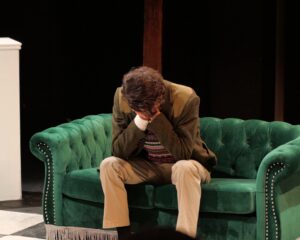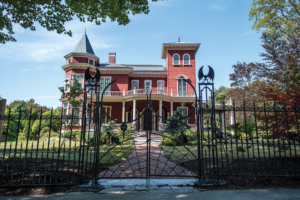Traci Molloy recently displayed her art exhibit titled “Against My Will UMaine,” on the Mall of the University of Maine. Her exhibit features 20 students and staff members from UMaine that are survivors of sexual assault.
Molloy created an installation under the same title, “Against My Will,” in October of 2018 for Domestic Violence Awareness Month. She featured 22 sexual assault survivors from Alfred University, her alma mater. Similar paintings were hung around the Mall. But her new installation shows the effects of sexual assault and violence on the UMaine campus. By including our own staff and peers, the project will show that even if Maine is a “safe state,” sexual assault and violence still occurs. The UMaine survivors featured are only a small percentage of survivors on this campus.
In conjunction with the exhibit, Molloy, along with the Women’s, Gender, and Sexuality program at UMaine and the Rising Tide Center, hosted a discussion to talk about the relevancy of both her work and the topic of sexual assault.
Molloy began the discussion by involving the audience in a visual exercise.
“I would like everyone who identifies as female to stand up,” Molloy said. “Now, I would like you all to count off one through five. Now everyone who is not a number one, please sit down. One in five women reports being sexually assaulted at some point in their life.”
Through her work, Molloy hopes to spark conversation about topics that are not typically talked about.
“I like to collaborate a lot. For almost 20 years now, I have been working in partnership with people that have experienced trauma,” Molloy said. “I don’t work exclusively with sexual assault survivors … but in the last four years, I have begun to collaborate on a large scale with sexual assault survivors.”
By working with survivors of sexual assault, she wants to create a dialogue about the depths of sexual assault and the trauma that survivors can experience. She also hopes that universities will begin to question what they are and are not teaching their students and staff, as well as what they need to do to ensure that students are safe on their campuses.
The rest of the discussion featured a panel made up of participants from Molloy’s exhibit. The women that participated shared their stories as survivors and how their experiences have shaped their lives since. Students and staff bravely shared their stories and hoped that other survivors both on the panel and in the audience could share solace in the fact that they are not alone.
“[This art] provides a platform for people to talk when talking is too complicated. And it provides a safety net for them,” Molloy said.
During the conversation, Molloy made sure to hear from a variety of voices in attendance. She said that until both men and women are willing to discuss issues like sexual assault, then no progress can be made.
“When I was here in the fall, I happened to walk past a class. It was a mixed class … and all of a sudden you’re hearing things from the men, and men are hearing things from the women and they’re like “we don’t talk about this.” With sexual assault, it’s taboo. It’s not discussed. Talking helps people have a better understanding, a better grasp of what sexual assault is and the depth of trauma that it can cause,” Molloy said.
Molloy began working on her exhibit when she was on the UMaine campus in October 2018. She began painting late in January once she finalized the 20 participants that she would include in the project. From there, she painted for six to seven hours a day. Molloy would draw her piece based on a photograph that was sent to her. Then she would paint over her sketch, spending two or three days on each participant’s photo.
The paintings are de-identified, meaning only certain features of the participant are shown. There is a basic outline of the person, including their hair and face shape, but only one or two other features, like their eyebrows or mouth, are painted. This keeps the participants anonymous and they are able to share their story without fear of people finding out who they are.
Each painting also includes a statement written by each participant. The women wrote out their personal experiences with sexual assault in their own handwriting, adding a very personal element to the piece.
Each painting is hung on a different posts around the Mall. The exhibit will be up until the end of April. Molloy’s exhibit is designed in recognition of Sexual Assault Awareness Month, which is a campaign designed to raise public awareness about sexual assault and abuse. This is her second year in a row producing an exhibit at UMaine in observance of Sexual Assault Awareness Month.















